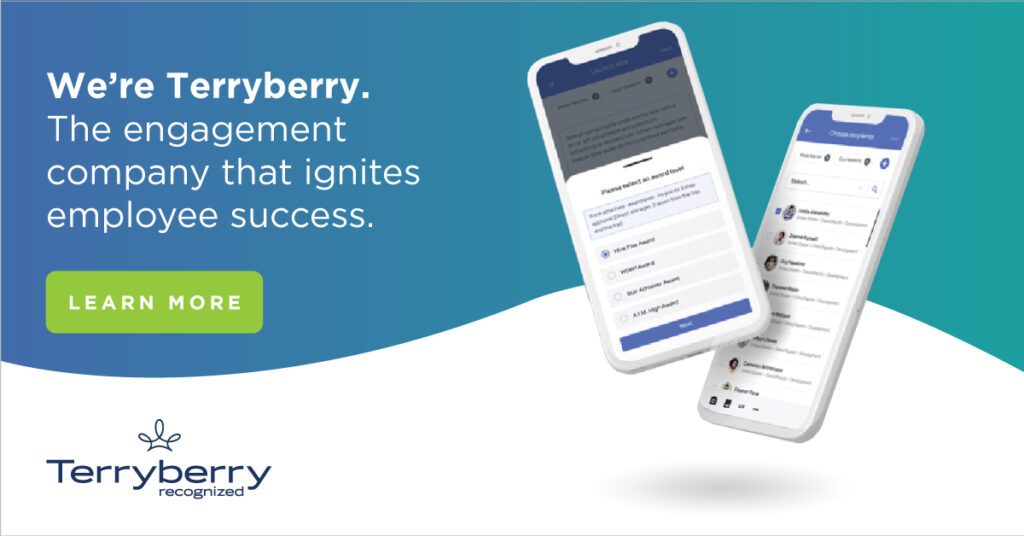January 12, 2023

A thriving workplace culture is built on employee engagement. It's cultivated through employees who have an eagerness to work, a willingness to take charge, and a determination to achieve the company’s core goals.
However, creating an engaging workplace culture isn't always easy. And unfortunately, low engagement oftentimes means money lost for the company. In fact, Gallup found that employees who are not engaged or who are actively disengaged cost the world $7.8 trillion in lost productivity.
Here, we'll discuss some of the most common signs of employee disengagement. We'll also talk about what you can do to measure and reignite your employees' passion in the workplace.
What is Employee Disengagement?
Employee disengagement is a term used to describe the lack of enthusiasm and motivation an employee has for their job. Actively disengaged employees don't feel connected or satisfied with the work they're doing. This can lead to poor performance, high turnover rates, and low morale in the workplace.
RELATED: What is Quiet Quitting and How Companies Should Respond to the Anti-Work Movement
Why Does Employee Disengagement Happen?
There are many reasons why an employee might become disengaged, including poor management and lack of recognition for their work. It's important to understand the root cause of disengagement so that you can take steps to address it.
Poor Communication
Employees who feel out of the loop or like they aren’t being included in important conversations are likely to start feeling disengaged. Communication is key in any business, and it’s important to make sure all employees feel like they can easily connect with their colleagues and voice their opinions.
Lack of Connection to the Company Mission
Engaged employees feel like their work matters and that it contributes to a greater goal. If your employees don’t understand how their individual roles fit with the overall company values, you'll risk employee engagement. So, make sure you regularly remind your employees of the company values and why their work is so important to the company's mission.
No Recognition or Appreciation
Everyone needs to feel appreciated for the work they do, no matter how small it may be. When employees don’t receive recognition for their efforts, they’re likely to become disengaged employees. Recognizing employees for their hard work and dedication is key to creating a positive workplace environment.
RELATED: Peer-to-Peer Recognition Programs: 7 Ideas That Boost Engagement
No Career Development Opportunities
Many employees want to feel like they are growing in their roles and that there are opportunities for them to advance their skills. In fact, Pew research found that 63% of people who quit their jobs in 2022 did so due to a lack of career advancement opportunities. If your employees don’t have access to training or professional development opportunities, it may be difficult for them to continue to feel engaged in their work.
No Feedback
Similar to career development, feedback is essential for employee engagement. If employees don’t receive regular feedback on their performance, they'll have no way of knowing what skills they should be striving to develop and which ones are their strengths. This can naturally lead to feelings of apathy and disengagement.
Instead, make sure you're providing your employees with regular, constructive feedback so that they can continue to grow and develop in their roles.
Lack of Flexibility
As we continue to shift to a world where remote work is the new norm, giving flexibility to your team members is key. With as much as 62% of workers believing that remote work positively affects their work engagement, it's important to give your employees the freedom to work in a way that best suits them.
By understanding the common causes of employee disengagement, you can begin to take steps to address it. Acknowledging how your employees are feeling and taking action will help create a workplace culture where employees feel valued, supported, and motivated. With the right strategies in place, you can help your employees feel connected to their work. This will help bring them closer to becoming integral players in their organization’s successes.
What are the Signs of Employee Disengagement?
It's important to recognize the signs of a disengaged employee to take steps to address the issue. While it may not always be obvious, here are some common signs of an employee who has become disengaged:
- They miss deadlines or don't meet their goals
- They lack enthusiasm for their work or show signs of burnout
- They have difficulty collaborating with other team members
- They lack motivation or interest in the quality of their work
- They have poor attendance and low productivity
- They often take long breaks during the day or are doing the bare minimum
- They display a negative attitude at work
How Does Employee Disengagement Impact Attrition?
Employee disengagement impacts attrition by leading to higher turnover rates. When an employee is not engaged in their work, they are more likely to leave the company in search of a better job or working environment. This can lead to increased costs for a company due to the time and resources necessary to hire and train new employees.
Additionally, if an employee leaves due to a lack of engagement, it can lead to decreased morale and productivity for the remaining employees. It can also have a negative impact on overall customer satisfaction.
Fortunately, with the right strategies in place, companies can prevent employee disengagement and its resulting attrition. And a higher engagement rate can result in increased productivity, profitability, retention, and customer loyalty — and will also help lower absenteeism.
RELATED: High-Potential Employees: 5 Ways to Identify & Develop Your Most Valuable Employees
How Can You Re-engage Disengaged Employees?
Once you have identified the signs of employee disengagement, it's important to take steps to re-engage your employees. Here are a few tips on how to do this:
Create a Culture of Open Communication
Make sure you have an open and honest dialogue with your employees about their concerns, feedback, and ideas. Although it may seem obvious, many leaders tend to bypass this critical step or ask the wrong questions. Unfortunately, this can often impact company culture without leaders even realizing it.
Instead of reprimanding or judging your employees, set up informal one-on-one meetings and check in with them. Try to listen attentively and empathize with their situation. Once you learn whether anything external (or internal) is impacting their commitment levels at work, you'll be able to take actionable steps towards improvement. Engaged employees are more likely to feel comfortable speaking openly and honestly about their personal lives with their team.
Encourage Collaboration
Encouraging collaboration between team members can boost morale, foster connections, and create a supportive and productive environment. By allowing your employees to work together, share ideas and learn from one another, you can create a team that is passionate about their work.
Provide Opportunities for Growth
People want to know they have a future in their careers with a clear growth trajectory. Give employees the opportunity to grow and develop in their roles. This could mean providing them with access to training programs or offering cross-functional assignments that allow them to expand their skill sets. Doing this shows your employees that you value their contribution and are invested in their growth and job satisfaction.
Recognize and Reward Performance
Make sure to recognize and reward employees for the hard work they put into their jobs. This could include giving out awards, recognizing achievements publicly, or simply thanking them for a job well done. These wins can be big or small, but they are wins nonetheless.
Celebrate when people meet deadlines, accomplish goals, and particularly when they're proactive and honest. With this type of reinforcement, you can build and maintain a culture that is highly motivated and engaged.
Communicate with Leadership Team
As history proves, people don't quit jobs — they leave managers. It's important to ensure your management team is equipped with the necessary resources and support to help engage employees. Make sure your leadership team understands how employee engagement can impact attrition rates and is taking steps to create an environment where people feel supported, valued, and respected.
To effectively engage your employees, seek out their feedback and look for signs of disconnection. Even the best-managed teams can suffer from low engagement if managers are not included in the strategy. If you neglect to include them, it will undoubtedly impact how successful your employee engagement efforts really are.
Use Extrinsic Motivation
According to Harvard Business Review, people tend to perform better when they are intrinsically motivated — or when they truly and deeply care about the activity in question, to the point of losing themselves in work and experiencing a state of flow. For many, this is an unusual occurrence rather than the norm.
Highly engaged workers will often give their best efforts without needing a reason to perform at their highest capabilities. But disengaged employees are more likely to wait for instruction and need to be extrinsically motivated. To help keep employees feeling motivated and engaged, financial or material rewards can be used as a form of extrinsic motivation. This could be something like a bonus, points on a social recognition program, or other monetary recognition.
While these monetary incentives help maintain a certain level of engagement, they should only be used sparingly — don't rely on them too heavily. Employees need to feel appreciated and valued, even without the promise of a reward at the end.
That’s why it’s important to ensure you are taking other steps necessary for engaging your employees: creating meaningful work experiences, fostering connections, encouraging growth opportunities, recognizing performance, and communicating with your leadership team. With the right strategies in place, you can create a workplace culture that is highly engaging and motivating for employees. Doing so will result in loyal, productive employees who are willing to go the extra mile for your company.
Investing in Your Team
Ultimately, gaining employee engagement requires more than simply having a strategy and good intentions. To achieve success in this area, leaders must be willing to invest time and effort into understanding their employees’ needs and motivating them to perform at their best.
Here are some ways to invest in your team:
-
- Provide Training and Development Opportunities: Allow employees to further their skillset and feel more connected to the company by providing them with training opportunities. This could include online classes or in-person workshops that focus on developing relevant skills.
-
- Encourage Socializing: Create a comfortable atmosphere where employees feel safe engaging with their co-workers by hosting events such as happy hours or team-building activities. But be sure to include events that also include remote and shift workers - excluding certain groups is sure to only deepen any feelings of disengagement.
- Reward Performance: Recognize exceptional performance with awards, spot bonuses, and recognition programs that reward top performers. You can create an employee recognition program that rewards employees for meeting milestones, surpassing goals, and other markers you choose as a team.
- Encourage Socializing: Create a comfortable atmosphere where employees feel safe engaging with their co-workers by hosting events such as happy hours or team-building activities. But be sure to include events that also include remote and shift workers - excluding certain groups is sure to only deepen any feelings of disengagement.
-
- Utilize Technology: Technology can help streamline processes and make it easier for workers to get their jobs done more efficiently. Invest in the latest technology that will benefit your team, such as cloud-based solutions or online collaboration tools.
- Encourage Growth Opportunities: Offer employees the chance to grow professionally with lateral moves, promotions, and special projects that allow them to take on more challenging roles and responsibilities. Make these opportunities easy to find and take advantage of.
RELATED: Employee Engagement Activities: 6 Ways to Boost Engagement for Remote Workers
Long-Term Engagement is the Ultimate Goal
The key to long-term employee engagement is creating an environment where employees feel appreciated, respected, and challenged. Give employees the opportunity to take ownership of their projects and make sure they understand how their work fits into the larger organizational goals. Make sure to provide regular feedback and recognition and encourage employees to take part in professional development opportunities.
The goal is to create an atmosphere where employees feel valued, supported, and motivated. By understanding the causes of employee disengagement and taking steps to address them, you can develop a culture of engagement that will help your organization succeed both financially and culturally.
Ultimately, creating a culture of engagement will lead to greater success for your organization — both financially and culturally — and help you avoid the costly consequences of disengagement, such as decreased productivity and low morale. With the right strategies in place, you can empower your employees and help them become integral players in the success of your organization.
Ready to start measuring employee engagement to bolster team performance? Terryberry can help! Schedule a demo with our team to see how Terryberry can transform your organization's recognition and employee incentive programs.

